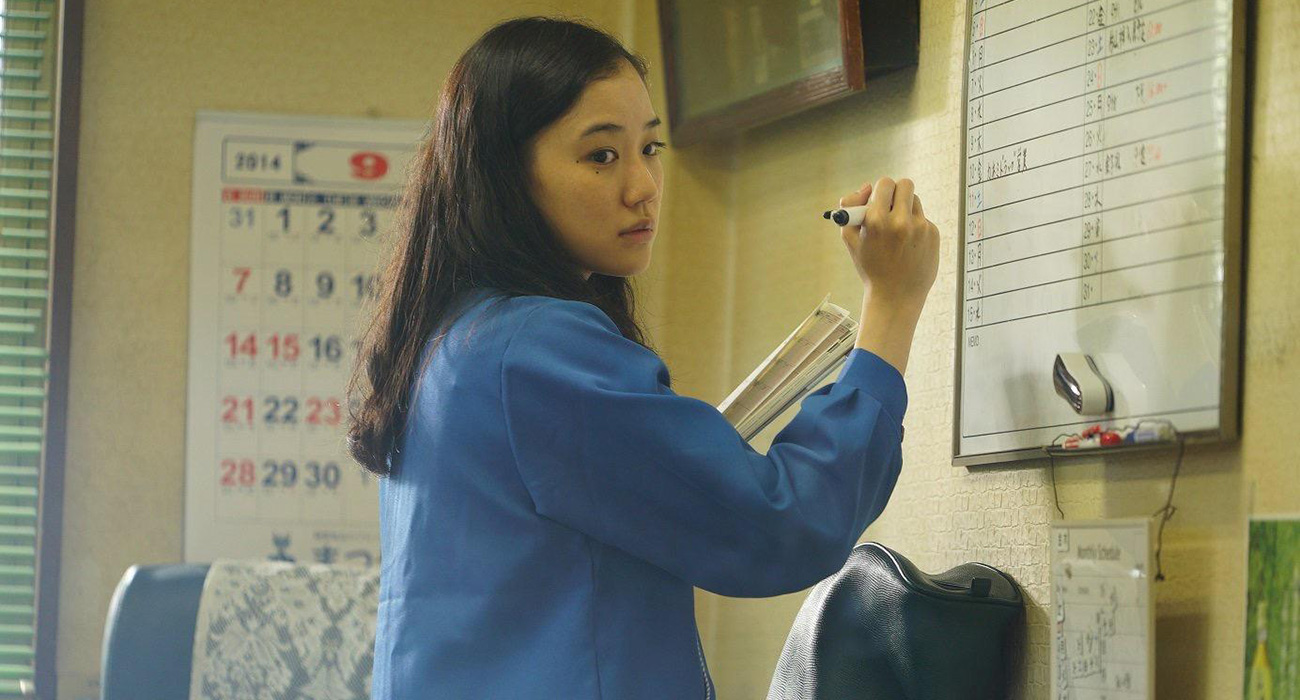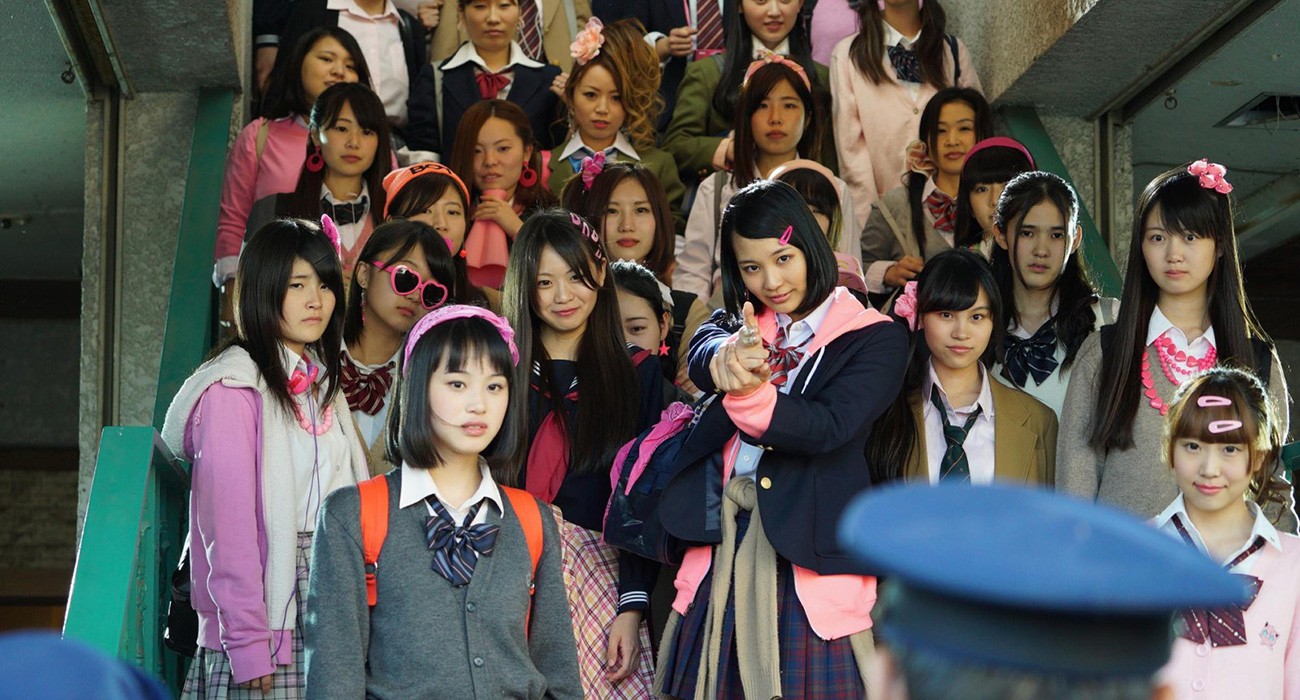If Wonderful World End (2015) gleaned on the commodification of youth and Our Huff and Puff Journey (2016) mused on what ‘coming-of-age’ really meant for teenage girls, then Japanese Girls Never Die serves as the pinnacle of Daigo Matsui’s informal trilogy on young Japanese women in modern-day Japan. Previous entries in this informal trilogy have mostly been light-hearted fare with glimpses of mature themes thrown into the mix. But Matsui’s latest is an unapologetic all-out assault on everyday misogyny as Japanese Girls Never Die plainly shows how the patriarchy disadvantages all women.
The film’s story is told across two timelines. The first timeline focuses on Haruko (Yu Aoi) who leads a mostly directionless life. She is in a complicated relationship with her neighbour Yuji (Huwie Ishizaki), still lives with her family and has a crappy job. Haruko is by all accounts an ordinary individual in a less than ideal situation. Conversely, the second timeline is a bit more exciting for new adults, Aina (Mitsuki Takahata), Yukio (Taiga) and Manabu (Shono Hayama), whose rise to notoriety as a trio of graffiti bandits — referring to themselves online as Kilroy — is thanks to a missing poster with Haruko’s face, which they use as their signature tag. Their rise as graffiti artists coincides with an increase in targeted attacks towards random males at night, committed by teenage girl gangs.

Matsui’s approach towards storytelling in his new film is undeniably messy. Japanese Girls Never Die‘s fragmented stories often makes it difficult to understand what is ‘really’ going on although this could be chalked up to the film not being a Matsui original (unlike his previous two films, Japanese Girls Never Die was adapted from a novel by screenwriter Misaki Setoyama). Despite positioning Haruko as the lead, her story feels very cursory compared to that of the graffiti vandals. Additionally, the Haruko timeline also doesn’t appear to have as much bearing on the overall plot which can lead one to believe that the character could perhaps have been better utilised as a spectral presence over the film (at one point in the film, Haruko says her disappearance enabled her to live forever in the memory of others, so it may have been interesting if she never appeared until the end). Storytelling gripes aside, what Haruko’s timeline does do is greatly service the film’s commentary.
Japanese Girls Never Die‘s indictment of the everyday misogyny experienced by women serves as the film’s most enduring strength and Matsui and Setoyama make no hesitations in communicating these experiences. The best example of this extends to the film’s depictions of sexism at the workplace as Haruko’s employers are openly sexist towards a senior female colleague in the presence of Haruko and the daughter of one of her employers (this same daughter also appears later in the film to brag about how she was picked as the lead for her school play because she was the most prettiest while her father and his male colleague search for a new applicant to hire — no coincidences there). Other examples also include the exploitation of women for the personal gain of men (whether for sexual pleasure or for fame) and the perception that a woman’s value depreciates with age. While these examples of misogyny aren’t entirely unique to Japan, these issues can feel specifically magnified when one takes into consideration the country’s obsession with youth. To what extent the film may (or may not) comment on the specific kind of misogyny that exists in Japan is a bit difficult to determine as an outsider, though it certainly feels like the filmmakers are onto something here.

Although fulfilling the role of an ordinary character, Aoi wrings the most out of it and does well in a more enigmatic turn in the latter half of the film. The supporting cast is equally fine as well with Takahata’s Aina character sharing a similar trajectory to that of Haruko’s despite being very different characters. Matsui’s notable use of social media and texting also makes a welcome return here, although in this instance it doesn’t quite service the film as well as it had in his previous two features (although it is worth noting that there is a very clever use of ‘online comment/message board chatter’ which on one level tells another story entirely but also helps to develop the rise of Kilroy without taking away the film’s momentum).
For all its dark turns however, Japanese Girls Never Dies does offer a message of hope for women in its memorable final scene. Proudly clad in their seifuku (the Japanese school girl uniform which itself has become a national symbol of youth, free-spirit and rebellion) the girl gang running amok in the film is ambushed by armed policeman, the literal personification of male authority. The girls ‘battle’ their way out in an imaginary shoot-out, escape the clutches of the cops and run away together, united. Designed to inspire, it is a scene that beckons the next generation of young women to stand up and fight against the patriarchal structures holding their gender down. And if there’s one thing that Japanese Girls Never Die probably wants you to walk away with after seeing the film, it’s to probably be as inspired as the gang’s leader and fight for the Harukos of the world.
